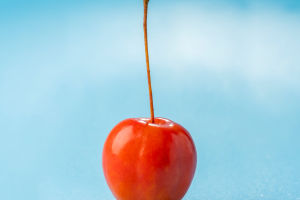Middle Eastern desserts are a feast for the senses, with their rich flavors, enticing aromas, and stunning presentations.
Rooted in centuries-old traditions, these sweets are often infused with ingredients like honey, nuts, and fragrant spices, offering a unique blend of taste and texture that is both exotic and comforting.
Baklava: The Nutty, Syrupy Delight
What It Is: Baklava is perhaps the most famous Middle Eastern dessert, known for its layers of thin, flaky phyllo dough, generously filled with chopped nuts, and sweetened with honey or syrup. The result is a crispy, sticky treat that’s hard to resist.
Origins: While its exact origins are debated, baklava is believed to have been developed during the Ottoman Empire, and it has since become a staple in Middle Eastern, Greek, and Turkish cuisines.
Flavor Profile: The combination of crunchy nuts, buttery pastry, and sweet syrup makes baklava a rich and indulgent dessert. Variations exist across regions, with different types of nuts, syrups, and even spices used to create unique versions of this classic sweet.
Knafeh: The Cheese Lover's Dessert
What It Is: Knafeh is a beloved Middle Eastern dessert made from thin, shredded phyllo dough or semolina, layered with soft cheese and soaked in a fragrant sugar syrup. It’s typically topped with crushed pistachios and sometimes a hint of orange blossom or rose water.
Origins: Knafeh has its roots in the Levant region, particularly in Palestine, Lebanon, and Jordan, and it’s often served during special occasions and celebrations.
Flavor Profile: The contrast of the gooey, slightly salty cheese with the sweet, floral syrup makes knafeh a delightful dessert that balances richness with a hint of freshness.
Middle Eastern Desserts: How Kanafeh is Made
Video By insydo
Ma'amoul: The Filled Shortbread Cookie
What It Is: Ma'amoul are delicate shortbread cookies filled with dates, nuts, or figs. These cookies are traditionally made in beautiful, intricate molds that leave a decorative pattern on the surface.
Origins: Ma'amoul is a traditional dessert in the Levant region, especially in Lebanon and Syria. They are often made for spiritual holidays, such as Eid.
Flavor Profile: The crumbly, buttery texture of the shortbread combined with the sweet, sticky filling creates a harmonious blend of flavors. The use of spices like cinnamon or cardamom in the filling adds warmth and depth to these delightful treats.
Basbousa: The Semolina Cake
What It Is: Basbousa is a sweet semolina cake soaked in a sugary syrup, often flavored with coconut, rose water, or lemon. It’s usually garnished with almonds or other nuts, adding a crunchy contrast to the soft cake.
Origins: This dessert is popular across the Middle East, from Egypt to the Arabian Peninsula. It’s known by different names, such as "Hareeseh" in Lebanon or "Revani" in turkish region, but the basic recipe remains similar.
Flavor Profile: The cake’s texture is dense yet moist, with a sweet, slightly tangy flavor from the syrup and a subtle nuttiness from the semolina and nuts.
Halva: The Sweet Sesame Treat
What It Is: Halva is a dense, crumbly dessert made primarily from tahini (sesame paste) and sugar. It comes in various flavors, with additions like pistachios, chocolate, or dried fruits to enhance its taste and texture.
Origins: Halva has a long history in the Middle East and beyond, with variations found across the region. It’s believed to have originated in Persia and has since become a popular treat in many Middle Eastern, Mediterranean, and Central Asian countries.
Flavor Profile: The nutty richness of sesame, combined with the sweetness of sugar, gives halva a unique flavor that’s both earthy and sweet. Its crumbly texture makes it a satisfying, melt-in-your-mouth dessert.
Middle Eastern desserts are a reflection of the region's rich history, culture, and love for sweet, intricate flavors. From the crispy layers of baklava to the gooey indulgence of knafeh, each dessert tells a story of tradition and artistry. So Lykkers,If you're enjoying these treats at a family gathering or discovering them for the first time, Middle Eastern desserts offer a truly unforgettable taste experience.


